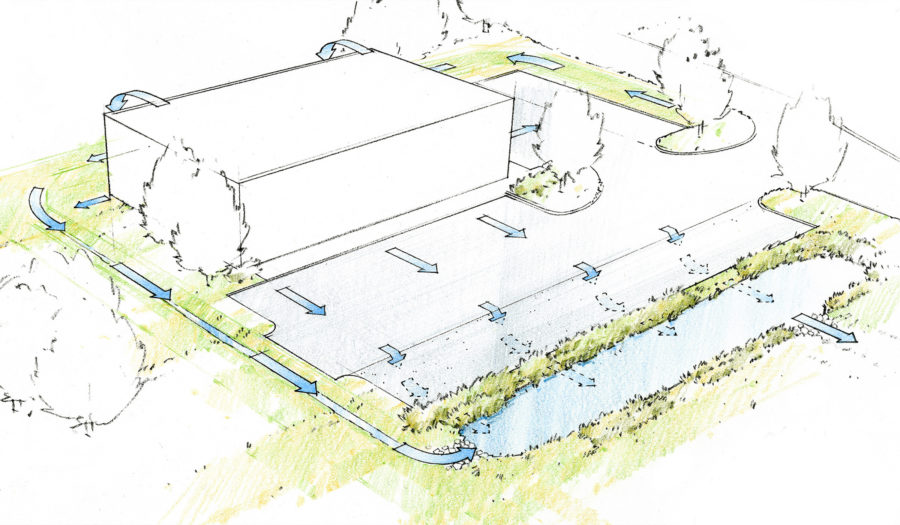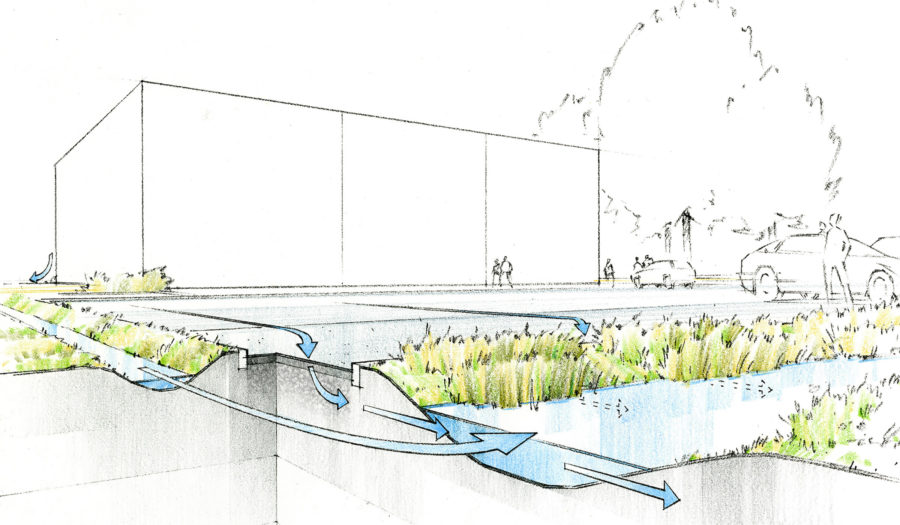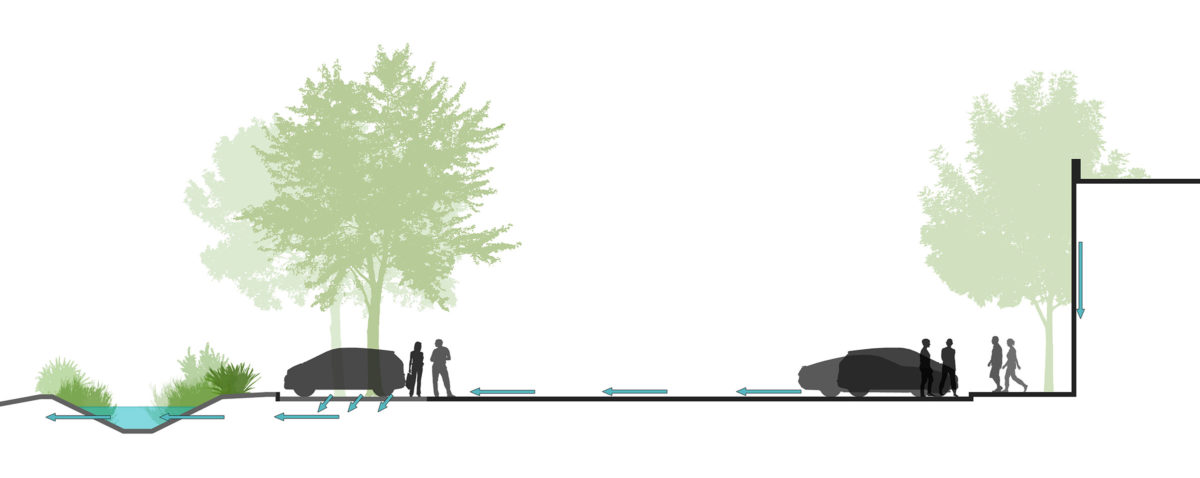The High Impact of Low Impact Development
By mimicking the natural environment through thoughtful land planning and design, low impact development (LID) fundamentally enhances water quality – and in turn, the future of our world. At a recent APWA conference, Clark Nexsen’s Allyson Monsour presented a case study on the high impact of low impact development, focusing on its role in meeting Virginia’s recently-adopted, stricter stormwater regulations.
The continuous pollution of waterways is a high profile issue. While Virginia is far from the only state implementing stricter stormwater regulations, it presents an exceptional example of how these regulations ripple outward to impact land owners and developers. Intended to minimize pollution of the Chesapeake Bay watershed, Virginia’s new stormwater regulations attempt to both preserve and revert the land to a condition similar to the natural landscape of the pre-colonial period.
Given that the Chesapeake Bay watershed covers approximately sixty percent of the Commonwealth, these regulations have broad implications. To meet the new standards, designers and owners need to explore innovative ways to implement stormwater management, particularly on smaller sites, and apply LID features while maximizing site utilization. Examples include infiltration practices, rain gardens, wet swales, and permeable pavement. These stormwater features improve the quality of runoff from roads, parking lots, and buildings, which accumulates pollutants prior to discharging into downstream storm drains and waterways.


Dollar Tree Site Plan Case Study
The Challenge
To shape the site plan for a new Dollar Tree in coastal Virginia, Allyson was challenged with crafting a civil design that balanced aesthetics with the demands of a small site to meet these stricter stormwater regulations. Completed in 2015, the store is prominently located along Route 13 in Exmore, Virginia, a small town on the Eastern Shore. Seeking to strengthen economic growth in the area, both the developer and the municipality placed emphasis on site and building aesthetics.
Due to both location and size, the site presented a series of complex challenges to comply with the new regulations. A geotechnical investigation determined the existing conditions of the site – minimal slope, high groundwater, and poor clay soils and low infiltration rates – would make common infiltration practices difficult, if not impossible, to implement. Located near the coast on flat terrain, this site limited options for stormwater management features, in contrast to locations further from the coast where infiltration practices provide manageable, cost-effective stormwater solutions. The civil team explored the possibility of purchasing credits with a nutrient bank, which enables an owner to purchase credits toward compliance, but no nutrient banks exist in that area.
The small lot size created considerable challenges and limited feasible options to manage runoff once zoning requirements for the facility, parking, and loading were met. This design experience highlighted the importance of developer and owner knowledge of the impact of these stringent regulations. Developers are naturally focused on return on investment while minimizing costs; however, in some cases purchasing more land may be more cost-effective than incurring design, construction, and maintenance costs for managing stormwater within a smaller site.
The Solution
To overcome these challenges, Allyson undertook an investigative and collaborative process with the civil engineering team to explore the best solutions to satisfy both the stormwater regulations and client needs.
Ultimately, to most effectively utilize the green space available, the civil design team developed a ‘treatment train’, featuring a series of stormwater management elements working together to minimize runoff and mimic the natural water filtration process. The treatment train includes rooftop disconnects, a soil-amended swale, permeable pavement, amended soils, and a type 2 wet swale. At 22 feet wide, this large wet swale plays a critical role in managing runoff from the site. The arrows indicate flow between treatment areas.

Lessons Learned & Future Goals
Continuously assessing our performance and looking for opportunities to improve is a critical component of our professional development and ability to support our clients. Given our emphasis on partnership with our clients, contractors, and fellow professionals, our team explores opportunities to educate our partners as they consider investing in new development, whether we’re engaged to consult prior to land purchase or by raising awareness about the potential impact of these stormwater regulations. Additionally, once in construction, LID features must be implemented in accordance with the civil drawings, even when, as Allyson noted, ‘what the civil engineer has drawn seems silly’. If not, the function of the system will fail to protect the environment – and it will fail to support the owner, potentially resulting in increased repair and maintenance costs
Allyson Monsour, PE, ENV SP, presented "The High Impact of Low Impact Development" to APWA in Roanoke, Virginia prior to her departure from Clark Nexsen in early 2021.
